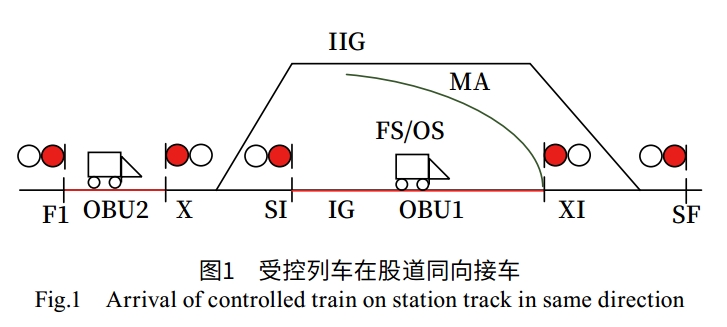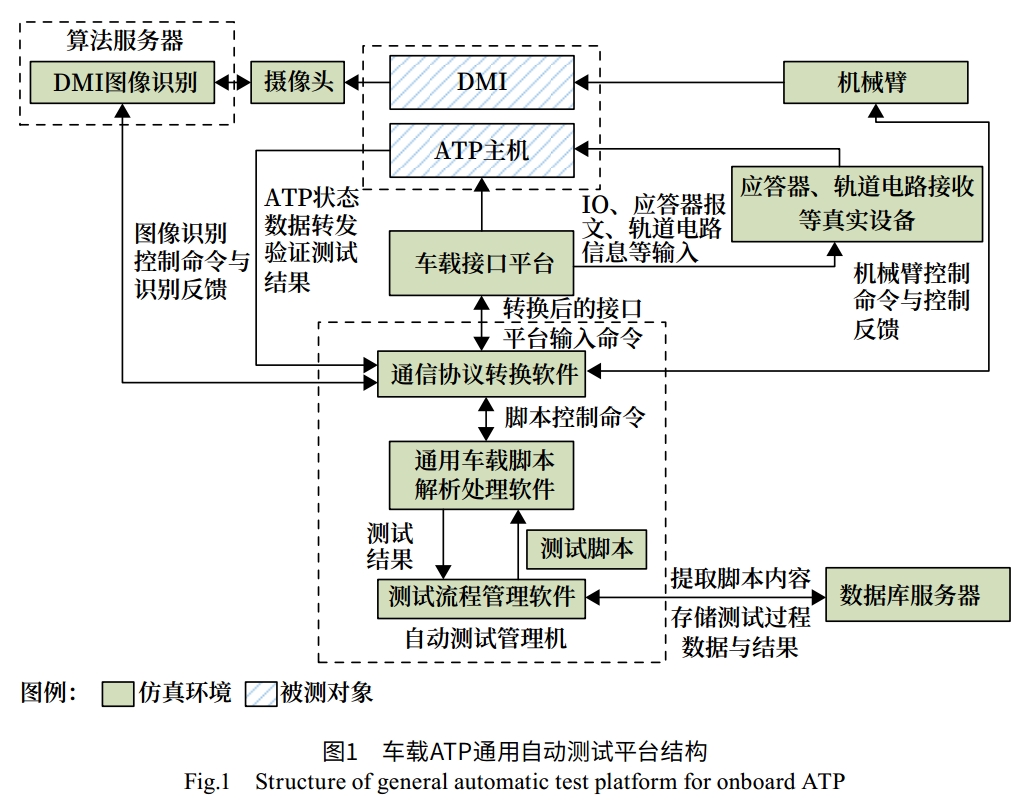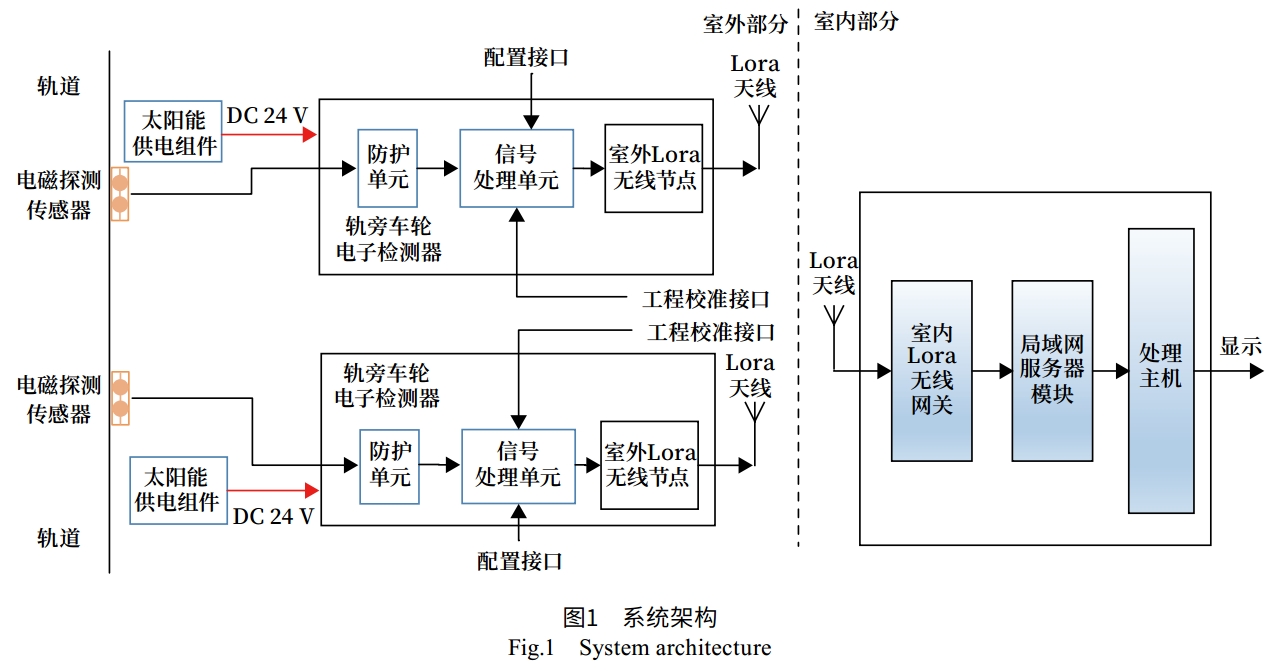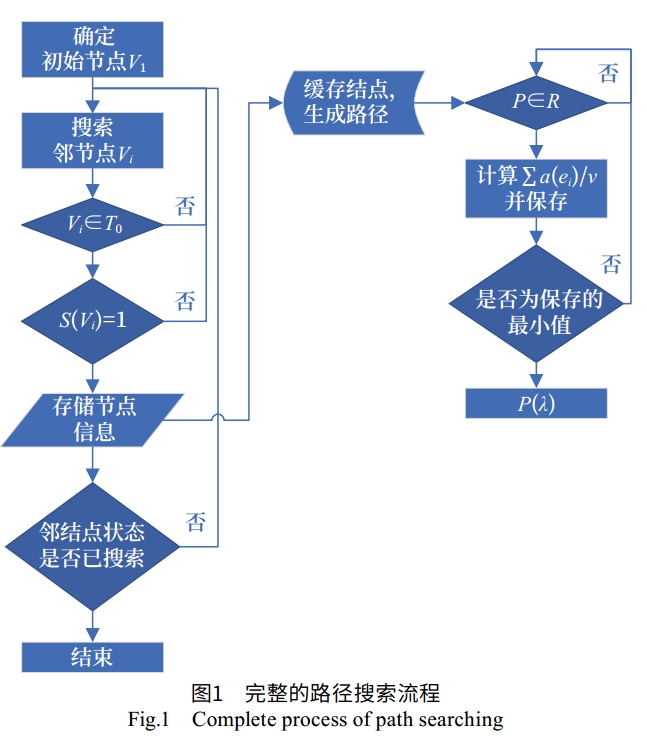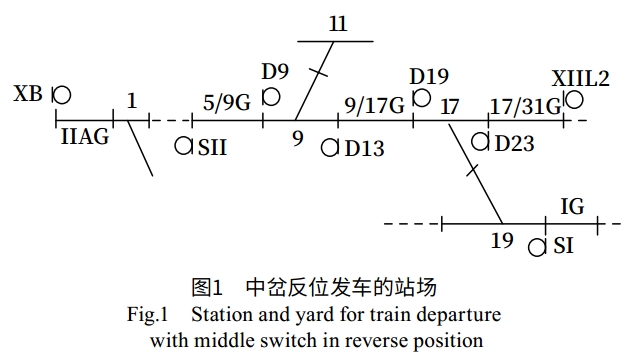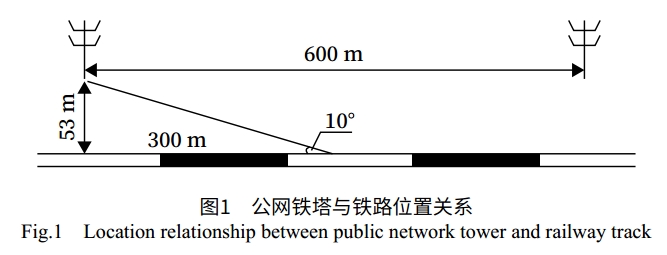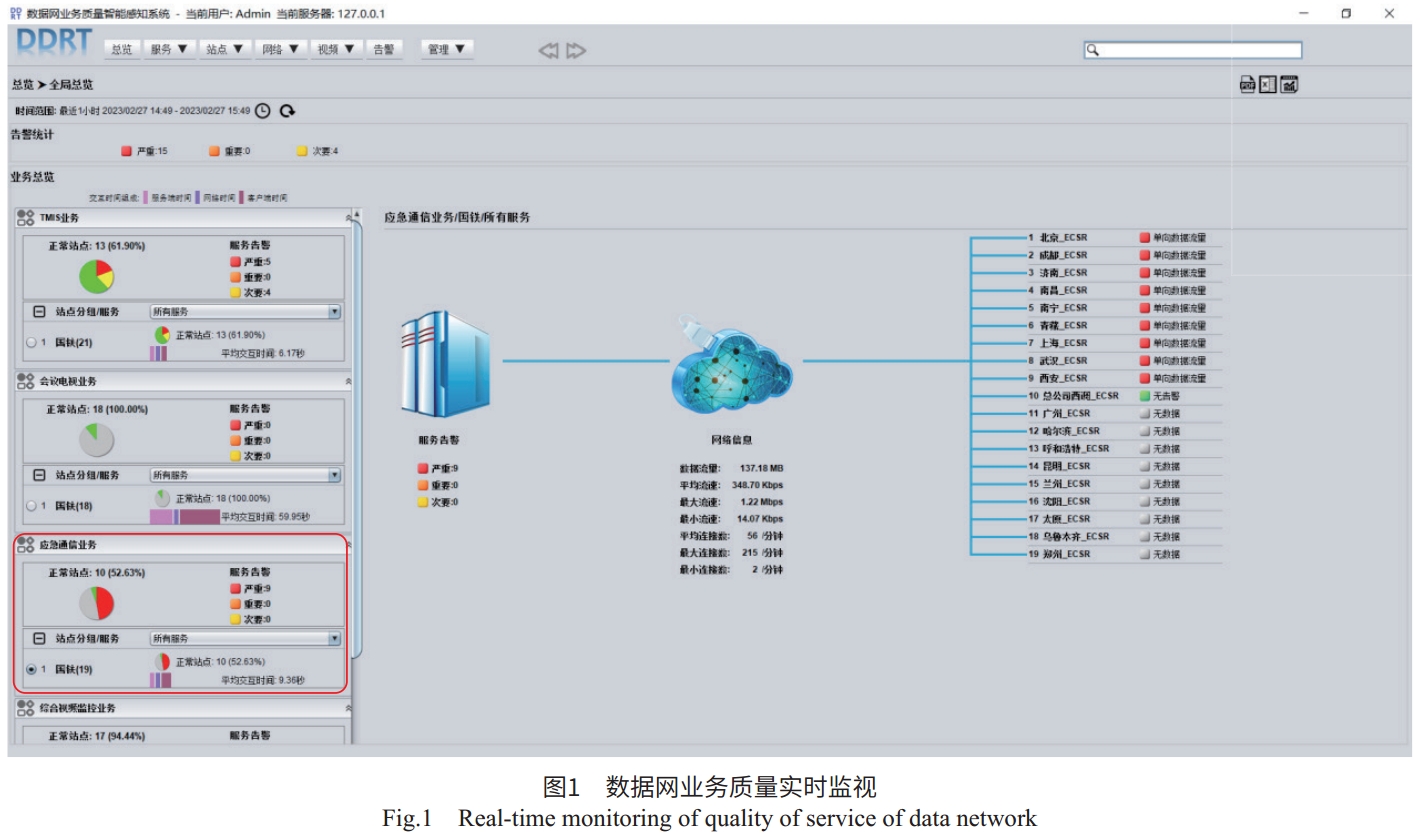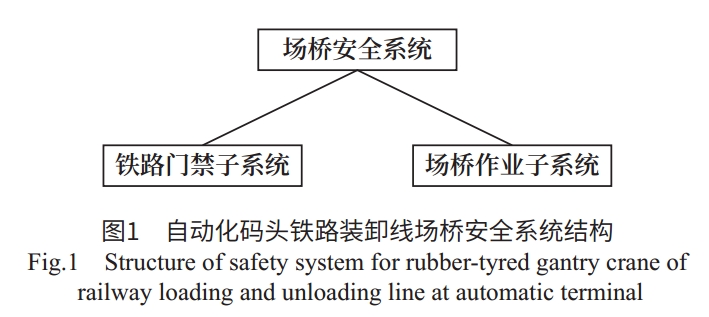Welcome to Railway Signalling & Communication Engineering,
Today is
中文
Current Issue
-
Research on Coupling Protection Scheme for Arrival on Same Track of ETCS-2 Trains for RBC
-
Yuan Haili, Yang Tao
-
2024 Vol. 21 (11):
1-8.
DOI:10.3969/j.issn.1673-4440.2024.11.001
-
Abstract (
)
PDF
(1077KB)(
)
-
Targeting at the operational requirements of complex signaling systems in different European countries, this paper analyzes the requirements for train control over dwelling and coupling operations of the ETCS-2 train control system based on the Radio Block Center (RBC). Based on the route status obtained from the interlocking, it proposes a scheme for providing train dwelling protection and ensuring coupling operation safety from the perspective of RBC. Four protection solutions are proposed, i.e. sending unconditional emergency stop message after route release, shortening current Movement Authority (MA) to train front end, issuing new MA of OS mode profile, and maintaining current MA while adding MA supervision. Moreover, feasibility issues of these four solutions are discussed from two aspects, i.e. safety and availability. Finally, maintaining current MA while adding MA supervision is selected as the application scheme for actual projects. Thus, system safety is improved without any impacts on system availability.
-
-
Research and Implementation of General Automatic Test Platform for Onboard ATP
-
Jiang Yunwei, Ai Qiangwa, Wu Peidong
-
2024 Vol. 21 (11):
9-16.
DOI:10.3969/j.issn.1673-4440.2024.11.002
-
Abstract (
)
PDF
(1260KB)(
)
-
During the manual functional testing for the onboard Automatic Train Protection (ATP) equipment in a semi-physical test environment, there are such problems as low efficiency, complex operations, high labor costs, poor visibility and challenges in test case design and maintenance. This paper presents the design and implementation of a general automatic test platform for onboard ATP based on an in-depth function analysis of various ATP products. A general script language is designed and developed for onboard ATP testing to convert the test cases into specific collections of script instructions based on the train location and communication message. An extensible interface platform is designed and developed for hardware components, and is combined with the robotic arm control and DMI image recognition units to simulate the external input signals and driver operations for ATP. A general communication protocol between various devices is designed for software components, and a comprehensive tool set covering script parsing and execution, communication protocol conversion and test process management is developed to enable the automatic control of the testing process. The actual engineering application demonstrates the proposed general automatic test platform for onboard ATP can reduce development costs, enhance test productivity, and offer substantial practical value.
-
-
Research and Implementation of Track Clearance Monitoring System
-
Shao Ruize, Zhang Jian
-
2024 Vol. 21 (11):
17-23,65.
DOI:10.3969/j.issn.1673-4440.2024.11.003
-
Abstract (
)
PDF
(1465KB)(
)
-
This paper aims to solve the problems of track clearance judgment in bad shunting section of freight stations. By combining the electromagnetic detection technology with the wireless transmission technology, an innovative auxiliary system is designed and implemented for track clearance. The proposed system uses distributed electromagnetic detection sensors for outdoor wheel detection, and uses solar energy for durable and stable power supply. The indoor processing host collects and analyzes the train axle number information from the sensors, and judges the clearance status of each section in view of the station and yard configuration. The Lora transmission technology can achieve communication between the indoor and outdoor equipment, to ensure real-time data transmission and accurate data processing. The man-machine interface can display the unoccupied/occupied status of the bad shunting section in real time, to provide work reference for the on-duty personnel, thus reducing the labor intensity of the on-duty personnel in confirming the status of the section, improving the safety of the operation, the operation efficiency and safety of freight stations.
-
-
Design and Implementation of Shunting Route Search for CTC System
-
Kang Qingyu
-
2024 Vol. 21 (11):
24-29.
DOI:10.3969/j.issn.1673-4440.2024.11.004
-
Abstract (
)
PDF
(1810KB)(
)
-
In view of the current situation that shunting operations are handled manually in most railway stations and yards, this paper proposes a design approach for shunting route search based on the centralized traffic control (Fzt-CTC) system, to improve the automation level of shunting operations, and to avoid incorrect route setting caused by human errors. The graph theory is used to abstract the shunting route search problems in railway stations and yards as path-finding problems of the directed acyclic graph. Four constraints are provided for the proposed model on the basis of the one-site practical situation. The theoretical model is processed through engineering approaches by removing non-critical constraints and introducing empirical values. Finally, on the basis of the existing CTC system, the shunting operation management software is designed to achieve the shunting route search function.
-
-
Design and Implementation of Circuit for Train Departure with Middle Switch in Reverse Position Based on Computer Based Interlocking
-
Jiang Shuang
-
2024 Vol. 21 (11):
30-33,60.
DOI:10.3969/j.issn.1673-4440.2024.11.005
-
Abstract (
)
PDF
(739KB)(
)
-
The existing protection circuit with switch lying in receiving-departure track cannot meet the demand of train departure with middle switch in reverse position. Depending on the computer based interlocking, this paper puts forward a design scheme suitable for train departure with middle switch in reverse position on the basis of the existing protection circuit with switch lying in receiving-departure track. The specific design scheme includes the special design of the end of the departure route with the middle switch in the reverse position, and the design of special release and scattered circuits in relevant sections of the route. The proposed scheme has been applied to Yungang West Station of Shanxi Jinneng Holding Group Co., Ltd, and is able to meet the operation requirements of the station, with good performance during field operation.
-
-
Analysis of Typical Counterexamples for Formal Verification of Computer Based Interlocking
-
Liu Lijuan, Chen Hong, Chen Yaohua
-
2024 Vol. 21 (11):
41-45.
DOI:10.3969/j.issn.1673-4440.2024.11.007
-
Abstract (
)
PDF
(1150KB)(
)
-
Formal verification is an effective and important means to ensure that the computer based interlocking system can meet specific safety requirements. Due to the particularity of the formal methods, the descriptions of the system model and the safety requirement model need to be completely accurate, failing which the verification will not be passed. Based on the practical experience in the formal verification of the computer based interlocking system, this paper summarizes the typical scenarios of failing to pass the validation when establishing the safety requirement model due to imperfect model establishment, which provides practical reference for formal verification.
-
-
Research on Session Management for 5G-R MCX Roaming Subscribers
-
Yin Weihai, Zhou Yuhui, Li Xue, Pang Mengmeng
-
2024 Vol. 21 (11):
46-53.
DOI:10.3969/j.issn.1673-4440.2024.11.008
-
Abstract (
)
PDF
(1083KB)(
)
-
The 5G-R roaming mobile subscribers can forward service data by using the Local Breakout mode of visiting places, which can greatly reduce the end-to-end time delay of voice, data and video services. Examining how 5G-R roaming subscribers discover and use various MCX service resources in the visiting place, this paper studies and analyzes such processes as service discovery, registration and deregistration, individual call and group call from the perspective of context session management. It also gives feasible implementation suggestions by comprehensively comparing the advantages and disadvantages of the roaming switch mechanism and single/double session mechanism in different scenarios.
-
-
Key Points of Public and Private Network Integration Design for Radio Communication of High-Speed Railways
-
Zhao Liujun
-
2024 Vol. 21 (11):
54-60.
DOI:10.3969/j.issn.1673-4440.2024.11.009
-
Abstract (
)
PDF
(2056KB)(
)
-
With the rapid development of the mobile internet and the popularity of smart phones, passengers have higher and higher coverage requirements for the public mobile communication network. According to the railway related planning, the dedicated radio communication system of high-speed railways will evolve from GSM-R to 5G-R. Targeting at the stage of railway construction drawing design, and considering the characteristics, design contents and different coverage objectives of various systems of the private networks GSM-R and 5G-R and the public network, this paper proposes the reasonable reservation of such resources as land, leakage cable location, equipment chamber, track crossing location, electric power supply, station equipment room and supporting facilities in the section subgrade as well as the bridge area, tunnel area and station area, to meet the coverage requirements of various systems.
-
-
Research on Migration and Management Technology for B/S Architecture Applications of Domestic Railway Terminals
-
Zhang Wenta, Wang Yipeng, Wang Hanying, Zhao Tian
-
2024 Vol. 21 (11):
66-71.
DOI:10.3969/j.issn.1673-4440.2024.11.011
-
Abstract (
)
PDF
(835KB)(
)
-
The development of and migration to domestic railway terminals is an imperative requirement to maintain the information security and achieve the self-controllability of upper-level railway business applications. This paper analyzes the current state of railway application systems, as well as the primary challenges and demands associated with the migration to domestic systems. It also explores a migration scheme for railway application systems based on the B/S architecture. Tailored to the characteristics and application scenarios of the railway sector, the proposed scheme introduces the concepts of application store and security management platform. It enables the whole-lifecycle management of railway applications, as well as the centralized management and control of IT-based innovative terminals, thus meeting such requirements as convenient installation, centralized management, distribution through dedicated channels, and adherence to stringent security and regulatory measures. Ultimately, the proposed solution provides a viable environment that ensures the safe and stable operation of applications on IT-based innovative terminals.
-
-
Research on Key Technologies of Signaling and Communication Systems in Automatic Container Storage Yards
-
Wang Zengli
-
2024 Vol. 21 (11):
72-79.
DOI:10.3969/j.issn.1673-4440.2024.11.012
-
Abstract (
)
PDF
(901KB)(
)
-
Targeting at the transfer operation problem when the railway storage yard of the automatic container terminal is connected with the railway operation line, and aiming to ensure the safe operation of the railway and the terminal and improve the operation efficiency of the railway and the terminal, this paper sorts out a complete set of operation procedures and safety measures. It also conducts systematic research on the key technologies in the transfer process, such as the operator safety guarantee, safe interlocking and dynamic protection of operating machinery, communication and integration of information systems, vehicle status detection and automatic mechanical device. It proposes a complete solution to solve the problems of automatic transfer operation of multimodal transport ports, and eliminate the problems of safe operation of railway crossing areas, thereby improving the overall transportation efficiency of ports, and the intelligence of terminal storage yards.
-
-
Safety Protection System and Method for Railway Automatic Container Loading and Unloading Line
-
Cai Jiajun
-
2024 Vol. 21 (11):
80-85.
DOI:10.3969/j.issn.1673-4440.2024.11.013
-
Abstract (
)
PDF
(848KB)(
)
-
Under the mode of connecting railway to port, the dedicated railway lines are connected to the port, and the relevant facilities are built within the port for train arrival and departure, as well as loading and unloading operations. The entry into and exit from the port railway loading and unloading lines of railway rolling stock has many conflicts with the operation of automatic loading and unloading equipment in space and time. This paper analyzes the structure and functions of the safety protection system for railway automatic container loading and unloading lines, and discusses a safety protection system and method for automatic rubber-tyred gantry cranes in the mode where railway shunting locomotives cooperate with automatic rubber-tyred gantry cranes to complete automatic loading and unloading operations on port railway loading and unloading lines. The proposed method can systematically solve the problems of safe and collaborative operation between the automatic rubber-tyred gantry cranes of port automatic container terminals and the shunting locomotives for railway wagon taking-out and placing-in, thus providing technical support for improving the operation capacity of automatic terminals.
-
-
Application Practice of Face Recognition Based Side Doors in Suzhou Rail Transit
-
Fu Baoming, Zhang Ning, Liu Jiajun, Jin Liyan
-
2024 Vol. 21 (11):
86-93,107.
DOI:10.3969/j.issn.1673-4440.2024.11.014
-
Abstract (
)
PDF
(1256KB)(
)
-
This paper introduces the basic concept of face recognition based side doors, and clarifies the application forms of faces in boarding through gate in rail transit. Taking into account the current business situation and usage needs of rail transit and the characteristics of the face recognition technology, it determines the overall plan for face recognition based side doors, and provides the detailed design of such business processes as activating face codes, entering and leaving stations, and handling abnormal ticketing situations. Building on the current situation of the ticketing system in Suzhou Rail Transit and the characteristics of the face recognition technology, it proposes the key technologies for boarding based on face recognition, such as mixing of face code and transit code, anti-duplication of transactions, offline recognition, and software/hardware standardization, to achieve boarding through gate based on face recognition.
-
-
Onboard Positioning Method for Tramways Based on Satellite Positioning
-
Zeng Junming, Zhang Jie, Han Cheng
-
2024 Vol. 21 (11):
94-100.
DOI:10.3969/j.issn.1673-4440.2024.11.015
-
Abstract (
)
PDF
(1007KB)(
)
-
This paper presents a satellite positioning method applied to tramways. On the basis of an in-depth analysis of the operational characteristics of tramways and a systematic review of various operational scenarios, a positioning strategy is developed by means of deep integration of GPS/BD satellite positioning system with speed sensors and section train management modules. Additionally, the key technologies involved in the proposed strategy are detailed on the basis of real-world scenarios. The proposed method minimizes reliance on wayside equipment while ensuring safety, and takes a vehicle-centered approach, to achieve effective vehicle positioning and location management for tramways. The research and application results show that the proposed method has high practical and innovative value, providing an effective positioning solution for lightweight rail transit systems such as tramways.
-
-
Analysis of Train Stopping Accuracy under ATO Driving Mode on Harbin Metro Line 3
-
Mu Tao
-
2024 Vol. 21 (11):
101-107.
DOI:10.3969/j.issn.1673-4440.2024.11.016
-
Abstract (
)
PDF
(1199KB)(
)
-
This paper makes analysis from the perspectives of vehicle braking performance, line conditions and ATO control strategy based on the test data, and proposes an overall improvement plan. Taking Harbin Metro Line 3 as an example, it analyzes the influencing factors of train stopping accuracy. It also analyzes the specific reason for train stopping deviation and proposes a solution from the perspectives of train stopping principles of onboard ATO, conversion mechanism between electric signal and air pressure signals and line status. The proposed solution can solve the problem of insufficient accuracy of train stopping in this project, and lay a foundation for the efficiency operation of this line in the future.
-
-
Research on Signalling System Scheme for Cross-Line Operation on Existing Lines in Beijing Subway
-
Han Zhen, Jiang Lei, Li Shuo
-
2024 Vol. 21 (11):
108-114.
DOI:10.3969/j.issn.1673-4440.2024.11.017
-
Abstract (
)
PDF
(807KB)(
)
-
In view of the requirements of cross-line operation, this paper studies and solves the interoperability problem of onboard-wayside train control data between the cross-line trains and wayside equipment of the local line under different system standards or the same system standard. It analyzes how to achieve the smooth automatic or manual switching of the cross-line trains after cross-line operation is enabled. It also analyzes the different schemes for cross-line traffic dispatching and commanding during cross-line operation and the key functions realized under each scheme. It puts forward the operation maintenance and management adjustment measures for the trains after cross-line operation is achieved. The research results can provide design reference for cross-line operation of trains between other existing subway lines in big cities, which can be promoted and utilized in other retrofitting projects for urban rail transit in the future.
-
-
Analysis Method of High Precision Frequency Shift Signal
-
Li Aitong
-
2024 Vol. 21 (11):
115-120.
DOI:10.3969/j.issn.1673-4440.2024.11.018
-
Abstract (
)
PDF
(1640KB)(
)
-
This paper introduces an analysis method of high-precision frequency-shift signals, to achieve the signal analysis and index monitoring of railway frequency-shift signals based on the railway centralized traffic control system. The proposed method involves the demodulation and calculation of the carrier frequency, low frequency and side frequency of railway frequency-shift signals. The time domain method is used to down-sample the data, so as to improve the calculation accuracy. The frequency domain method Zoom-FFT is used to calculate the carrier frequency and low frequency. The zero-phase-shift filtering method is used to eliminate the phenomenon of signal delay after filtering. The filtered data is shaped to locate the data sequence used to calculate the side frequency. The FFT frequency domain calculation is performed on the located data sequence to obtain the side frequency value. The proposed method can improve the calculation accuracy, so to meet the needs of engineering application.
-
-
Analysis and Application of Pre-Treatment Method for Joint Rectification of Turnouts in New Line Construction
-
He Huahai
-
2024 Vol. 21 (11):
121-126.
DOI:10.3969/j.issn.1673-4440.2024.11.019
-
Abstract (
)
PDF
(889KB)(
)
-
Turnouts are main devices for railway train operation and basic devices for changing the direction of train movement. The operation quality of turnouts is crucial for the stable operation of railway lines in the future. This paper elaborates on the current situation of the joint rectification process of turnouts by the permanent way and signaling departments in new line construction, and analyzes and points out the practical problems in the key links. It also proposes corresponding suggestions and targeted solutions to reduce the impacts on the overall speed of new line construction projects, improve the construction quality of the switch equipment, and enhance the operation quality of the switch equipment during railway operation in the future, thus laying a solid foundation for safe railway transportation.
-
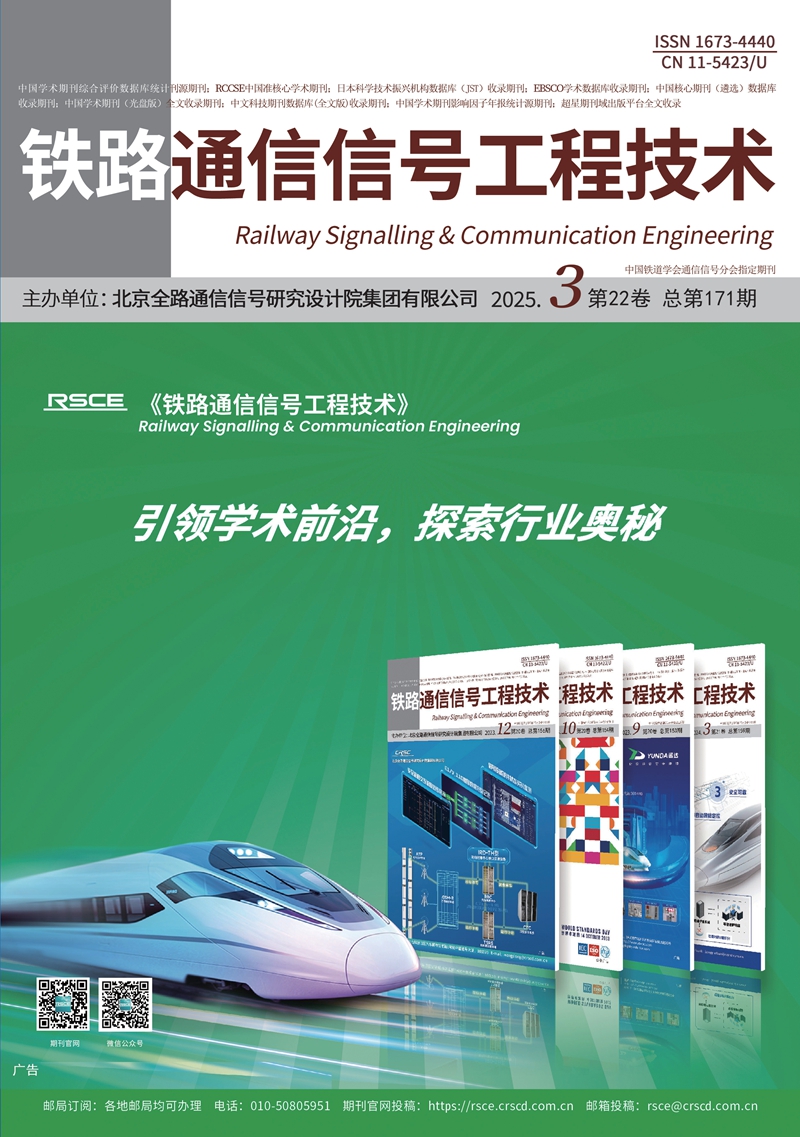
-
月刊
Monthly
-
第22卷 第3期 总第期
-
Vol.22 No.3 S.No.
-
出版:
2025-03-21
-
Published on:
-
创刊:2004 年
-
First Issue: 2004

